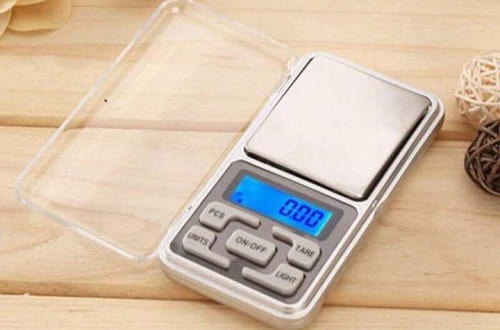Are you a fanatical baker? An athlete who is more concerned about diet and measures every ounce you eat? A jeweller measuring small masses of precious metals and stones? A Chemist who has got to measure the tiny amount of chemical properly to get that right solution? No wonder you must have had thoughts on getting yourself a weighing balance that comes handy and doesn’t compromise on the accuracy.
Yes, Weighing machines have seen technological advancements and evolved. They meet almost every requirement of various sectors of business people and laymen.
The Pocket scale is named rightly for its purpose – They are smaller in size that fits perfectly in pockets. They are huge space savers; they generally work on batteries. They don’t compromise on the accuracy, and they are quite affordable, and they can be calibrated and utilized by any home-based business person. All these have made the popularity of the pocket scale reach the peak.

Applications
You may wonder if it would meet your needs. The pocket scale serves a wide range of applications. A school teacher may find it trouble-free to teach students, mass, and measurement concepts. Household kitchens and restaurants that measure their portions regularly before serving may find this very useful.
Calibration and usage
Just like any other weighing machine, the pocket scale also has to be calibrated to acquire minimum tolerance. The process includes tearing down the weight of the tray onto which the substance is put for the measurement. (The process is often mentioned in the catalogue that comes along). The given steps can carry out the calibration.
- The scale has to be placed on a vibration-free surface, preferably a surface made of rubber to avoid errors.
- The increments are to be set up in grains- the display should show 00gn. Bring the scale to the calibrate mode.
- A standard weight or approved weight (say 100grams) has to be placed and measured initially to confirm the accuracy. If the scale flashes the correct weight of the standard weight, it passes the test.
- Set the tray onto the scale (also note down the weight of the tray) and press the “tear button” to reset the reading to Zero. This eliminates the weight of the tray used to hold the substance while measuring.
- On removing the tray, the reading should show the negative of the weight of the tray.
After calibration, it is advised not to move the scale.
Capacity
The maximum capacity of the pocket scale usually ranges between 200g to 1000g.
The maximum capacity of the measuring scale will be mentioned in the catalogue that comes along the device. It is strictly advised not to overload the scale as it may damage the unit permanently and cause false readings.
Maintenance
- The Pocket scales are advised to be stored in moderate temperatures within 10 to 30°C. Storing them in extreme temperatures can cause damage.
- The storage environment should be dust free and less humidity.
- Cleaning of the surface with slightly damp soft clothes with mild detergents is appreciated.
- A strong impact or vibration on the unit must be avoided.
Conclusion
Despite their small size, a pocket scale can accomplish anything that a proper weighing scale could do. The price of the scale increases with the number of features offered by the device. Ensuring the pocket scale is well calibrated and cleaned each time before measuring would provide the best results for the long run.
Santosh Kumar, the author behind IndiasStuffs.com, is passionate about sharing valuable insights on a variety of topics, including lifestyle, technology, and Indian culture.
Page Contents

